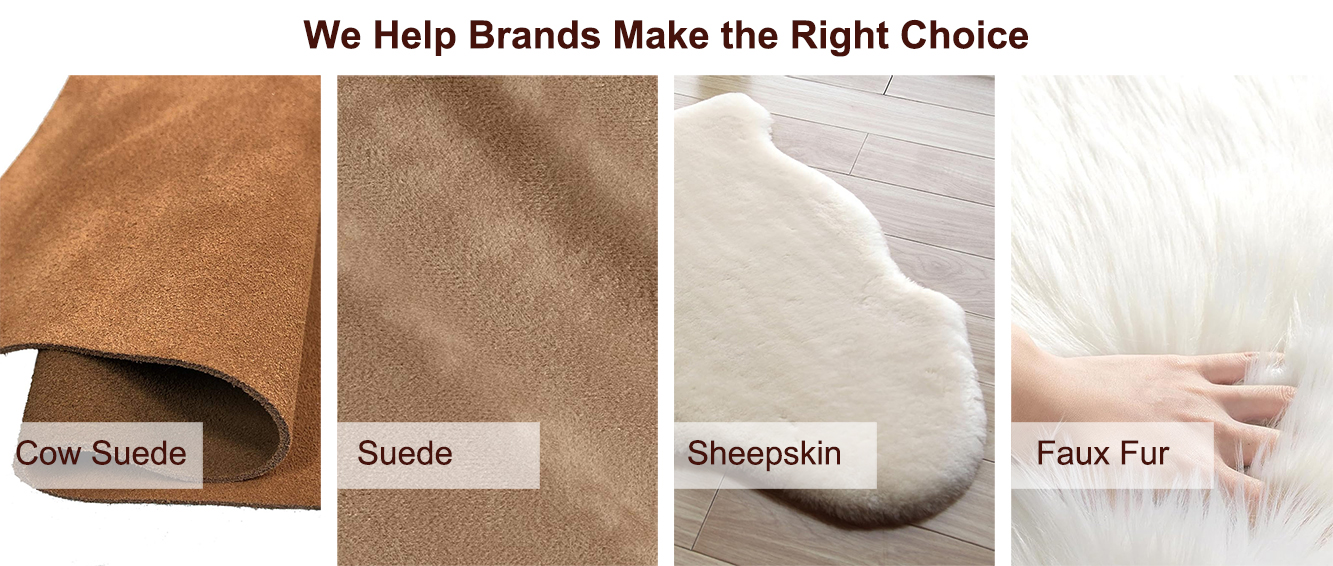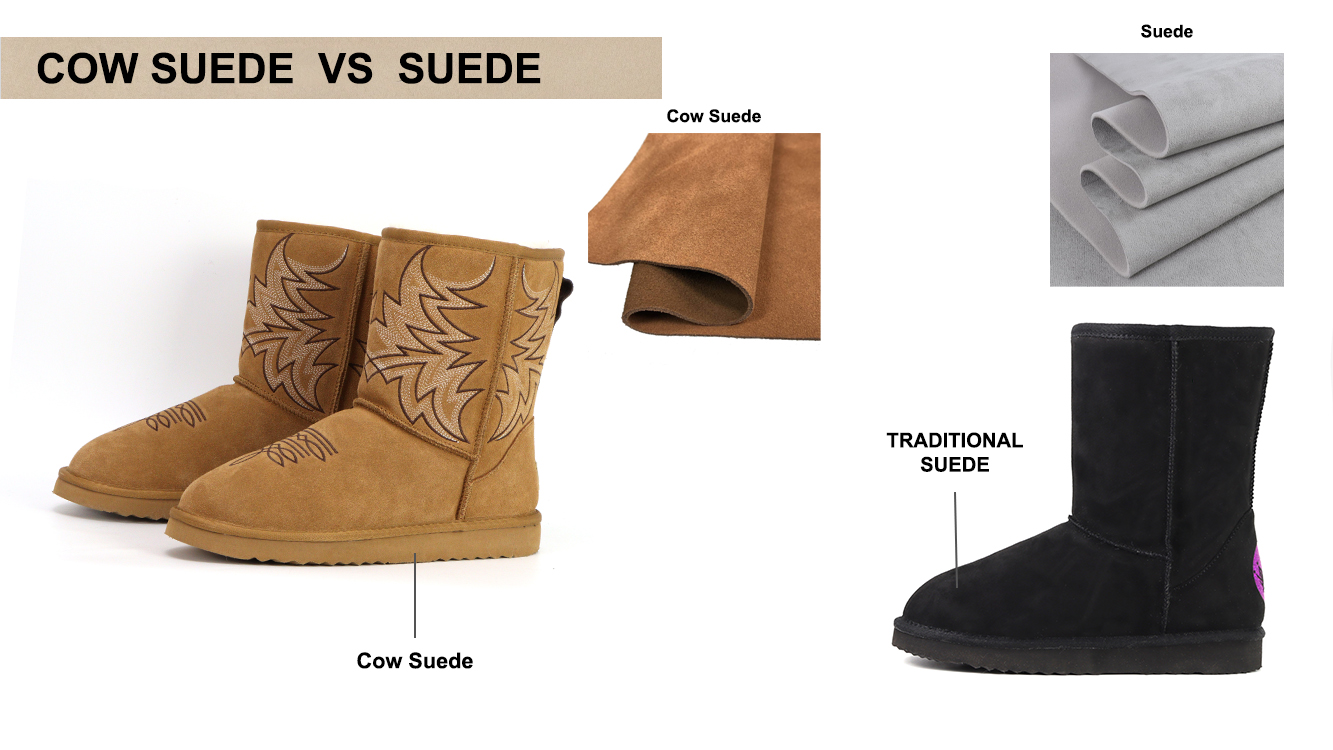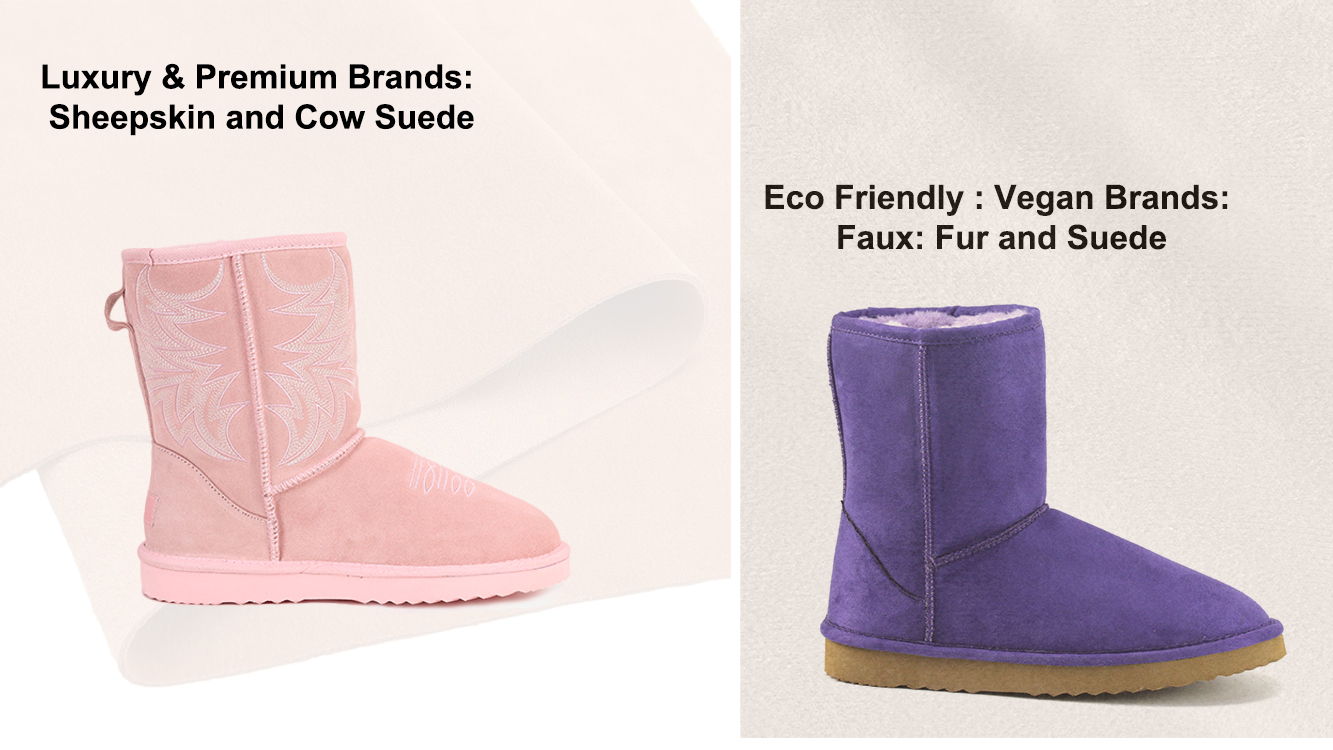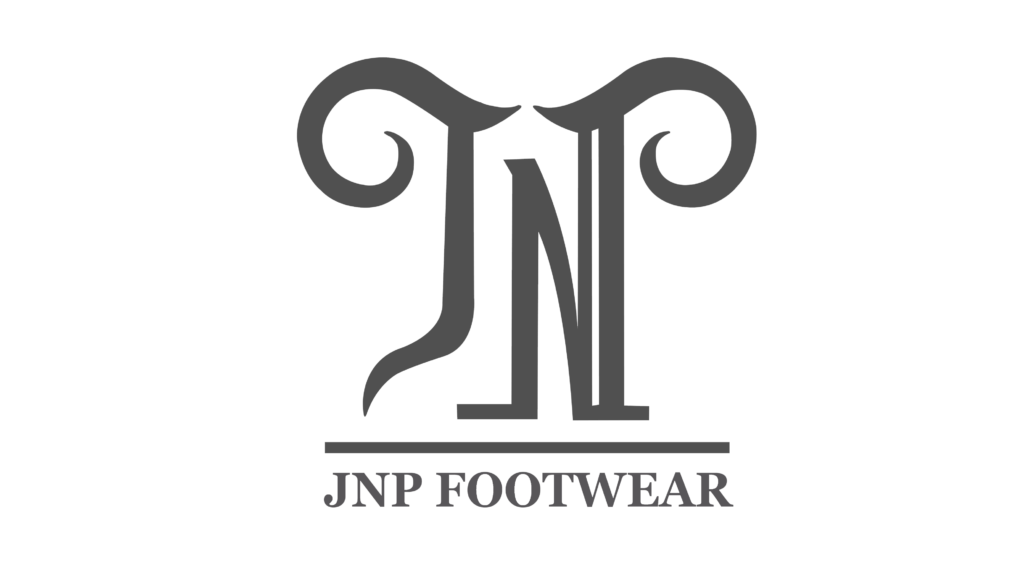Sheepskin or Faux Fur? Cow Suede or Suede? We Help Brands Make the Right Choice

Choosing between sheepskin1 and faux fur2, or cow suede3 and suede4, can be confusing for brands. Each material has unique benefits, but the right choice depends on your target audience, budget, and brand values.
Selecting the right material is crucial for creating high-quality, stylish, and sustainable footwear. Let’s explore the key differences and help you make the best decision for your brand.
What’s the Difference Between Sheepskin and Faux Fur?

Sheepskin1 is natural and provides warmth, durability, and moisture-wicking properties. Faux fur2 is synthetic, offering affordability, easy maintenance, and vegan-friendly appeal.
Key Factors to Consider
| Factor | Sheepskin | Faux Fur |
|---|---|---|
| Material | Natural animal skin | Synthetic fibers |
| Warmth | Excellent insulation | Good insulation, varies by quality |
| Durability | Long-lasting, resistant to wear | Less durable, may mat over time |
| Moisture-Wicking | Absorbs and releases moisture naturally | Does not wick moisture |
| Maintenance | Requires special cleaning | Easy to wash and maintain |
| Ethical Considerations | Non-vegan, requires animal farming | Vegan and cruelty-free |
| Cost | Higher price | More affordable |
If your brand values sustainability5 and natural materials, sheepskin may be the best choice. If affordability, ease of care, and ethical considerations are priorities, faux fur is a great alternative.
What’s the Difference Between Cow Suede and Suede?

Cow suede3 is made from cowhide leather and is more durable, while suede4 (often from smaller animals) is softer but less resilient.
Key Factors to Consider
| Factor | Cow Suede | Suede (General) |
|---|---|---|
| Material | Made from cowhide | Can be from lamb, goat, or synthetic sources |
| Texture | Thicker, more structured | Softer, more delicate |
| Durability | Highly durable, resistant to wear | More prone to scuffing and damage |
| Water Resistance | Can be treated for water resistance | Less water-resistant |
| Maintenance | Requires special suede cleaner | More delicate and requires careful handling |
| Cost | Higher price due to durability | Can be more affordable |
For brands looking for long-lasting, premium footwear, cow suede3 is an excellent investment. If your goal is soft, luxurious texture at a lower cost, traditional suede4 may be the right fit.
Which Material Is Best for Your Brand?

Each brand has unique needs, so the best material depends on your target market and brand values. Here’s a quick guide:
| Brand Type | Best Choice |
|---|---|
| Luxury & Premium Brands | Sheepskin and Cow Suede |
| Eco-Friendly & Vegan Brands | Faux Fur and Non-Animal Suede |
| Fast Fashion & Trendy Brands | Faux Fur and Suede |
| Outdoor & Performance Brands | Sheepskin and Cow Suede |
Conclusion
Choosing the right material depends on your brand’s priorities—whether it’s sustainability5, luxury, durability, or cost-effectiveness. By understanding the differences, you can make informed decisions that align with your target market and values.
Footnotes
-
Sheepskin is widely used in footwear due to its natural insulation and durability. Learn more about sheepskin materials and sourcing. ↩ ↩
-
Faux fur is a synthetic alternative offering ethical and cost benefits. Discover the latest advancements in high-quality faux fur. ↩ ↩
-
Cow suede is known for its strength and longevity, making it a popular choice for premium footwear. Read more about cowhide suede. ↩ ↩ ↩
-
Suede can be made from various sources, including lamb and goat hides, with a softer feel but lower durability. Explore different types of suede materials. ↩ ↩ ↩
-
Sustainability in fashion is becoming increasingly important. Learn about sustainable material choices for footwear. ↩ ↩

